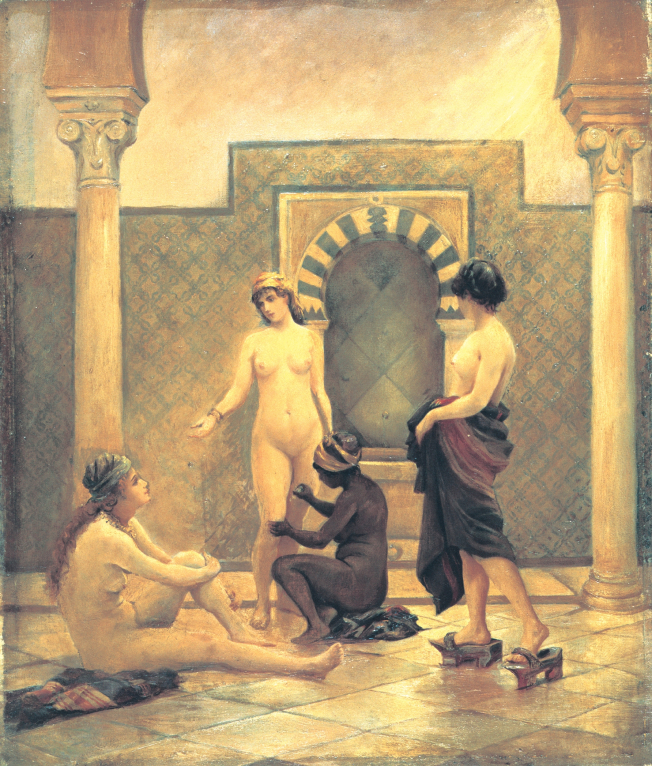Oriental bath, c. 1890-1900


In Oriental Bath, three young women are depicted in the richly decorated baths, who, relaxing in the hammam, languidly enjoy the services provided by a black girl. The atmospheric nature of the place is conveyed by a particularly limited colour range which extends to the monochrome of a warm brown. It is not impossible that the picture is unfinished, a conclusion which is supported by the indistinct rendering of the background and of the details, and the fact that it is unsigned. Nevertheless, the painting in the case of the nudes, who have the glow of alabaster, and the rendering of the ambient eroticism in this occult sanctuary of women make this work a genuine expression of Rallis's objectives.



